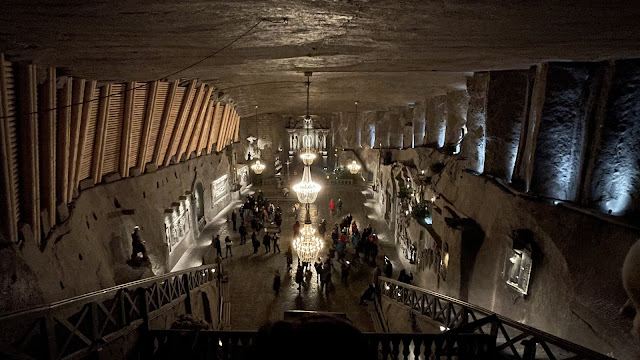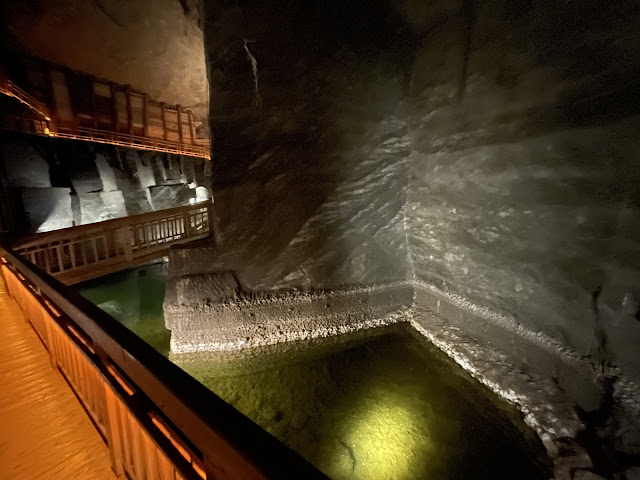Wiesliczka is a suburb of Krakow. Under it is a massive salt mine, extending to a depth of approximately over 300 meters, with the total length of labyrinth passages spanning over 287 kilometers. The use of the site dates back to the 13th century, where the locals would harvest salt from brine (salt concentrate) wells dug on the wetlands, as in photo below. Later in the same century the wells started to be extended as deeper mine shafts and tunnels. Wiesliczka is not just a mine, it is a massive underground world and site of art and history. It is also a well-deserved UNESCO World Heritage Site.
Salt has by now meticulously been carved out for over seven centuries, albeit the mining operations have ceased since 2007. Salt was turned into blocks like the one below, one such block being so valuable that one could buy the houses of an entire village with it:
The mine has an expansive network of tunnels, chambers, and salt lakes. As you descend into this subterranean wonder, the air subtly changes, adopting a salty tang, the temperature cools, and the daylight fades, replaced by a soft glow that illuminates the salt-encrusted walls, creating an atmosphere that is both eerily calm and awe-inspiring.
What I found particularly interesting is how the mine's chambers and tunnels had to be supported after excavation, to avoid the salt layers to collapse under the city above. Vast amounts of trees were cut in the forests around, and used as log supports. And those supports are massive, as you can see in the below picture.Amazingly, in the salty dry air of the tunnels, wood - unlike metal - stays intact for centuries. I was kind of wondering how this machine turned into a carbon storage unit, when trees grow above ground, but then get stored permanently without rotting in the mine below.
The real allure of the Wieliczka Salt Mine, however, lies not only in its vastness but in its extraordinary sculptures and structures. This is where miners turned artists, crafting an array of exquisite masterpieces from the translucent salt. Among the most awe-inspiring sights is the majestic St. Kinga's Chapel, a large underground church intricately adorned with salt-made chandeliers, sculptures, and bas-reliefs:
The mine also houses an underground lake, a wellness complex famed for its healing microclimate, and even a subterranean sanatorium. With its unique combination of natural beauty and human craftsmanship, the Wieliczka Salt Mine not just a geological wonder, it's a journey into the heart of Poland's historical, spiritual, and cultural essence.
Read more about the salt mines from the tour organizer's page or Wikipedia.
More from St. Kinga's Chapel:
Other chapels:
See also the video:
Read more urban exploration stories from theurbanexplorer.net, and other underground stories from planetcaver.net. Read the full Planetskier series at planetskier.net, or all blog articles from Blogspot or TGR. Photos and text (c) 2023 by Jari Arkko. All rights reserved.














No comments:
Post a Comment